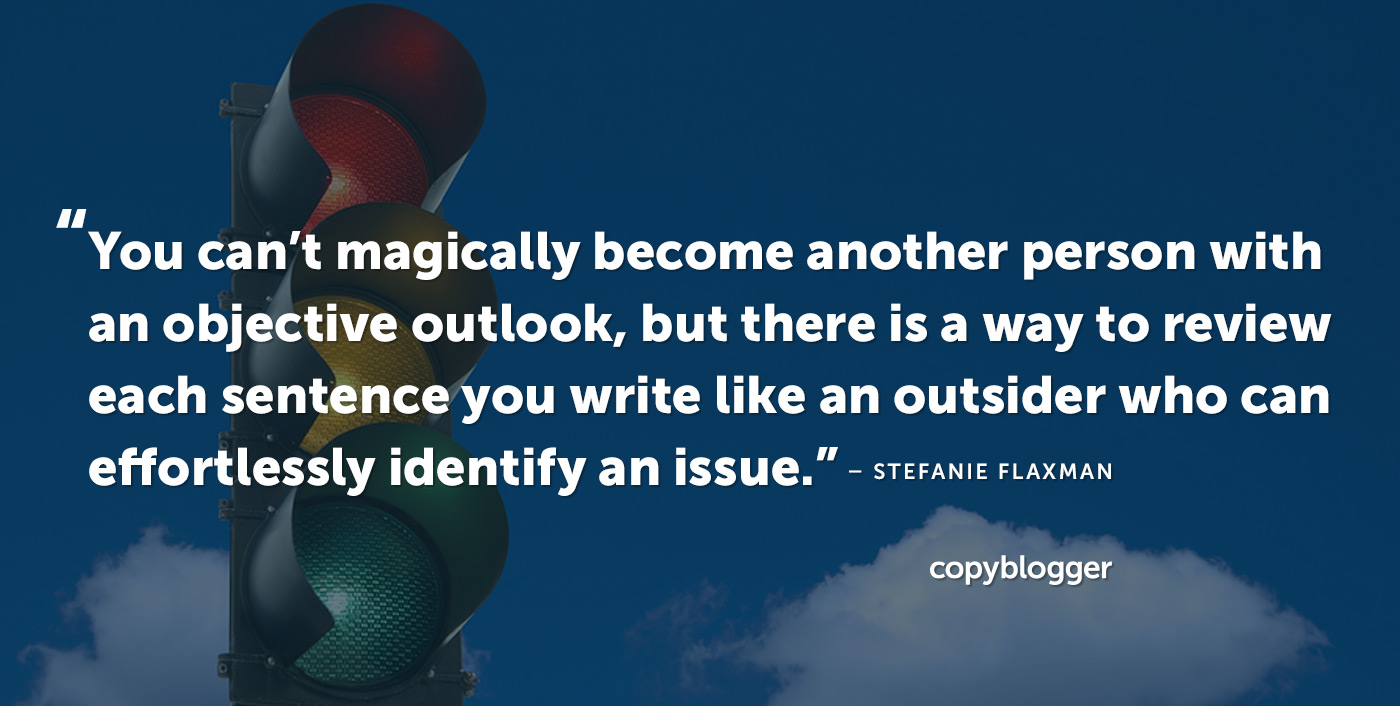As a Los Angeles native, I know a thing or two about sitting in traffic.
I’m talking about physically sitting in your car while stopped in traffic on the way to your destination — not the traffic you talk about when people visit your website.
But the two different types of traffic may not be as unrelated as you think, especially as you edit your own writing for your site.
The problem with editing your own writing
It’s a lack of objectivity.
One of my favorite observations about traffic jams is that sometimes you’re the one accidentally blocking an intersection with your car — making it difficult for other drivers to move forward on the road — and sometimes you’re the one honking at the person blocking an intersection.
If you drive on a regular basis on crowded streets, you fluidly move between these two roles.
While it’s easy to recognize another driver’s mistakes, and criticize her shortcomings or behavior that has frustrated you, it’s difficult to objectively observe and accurately assess your own actions (and possible missteps).
When you block an intersection, you don’t necessarily regard yourself in the same disapproving way you regard another driver when he blocks your path.
The same lack of objectivity is present when you edit your personal writing.
The discerning taste of an onlooker
As you develop your content marketing strategy, you need to evaluate your writing with the discerning taste of an onlooker.
The problem is, you can’t magically become another person with an objective outlook.
However, there is a way to review each sentence you write like an outsider who can effortlessly identify an issue.
This technique will help you categorize sections of your draft so you can focus on improving weaknesses in your writing.
How to edit your own writing
You can use the Traffic Light Revision Technique (TLRT) to edit your own writing once you’ve finished a draft.
If it’s still a rough draft, you can use this method to expand, copy edit, and finalize the text. If it’s a final draft, you can use this method to proofread your content.
Put your writing in a word processor that allows you to highlight the text with different colors, like a Microsoft Word document or Google Doc.
Follow these five steps after you’ve saved your current file.
1. Make a copy of the document
Include “TLRT1” in the file name when you save this copy.
Now you have the original document and a version you will mark-up first before you edit.
2. As you examine each sentence, highlight it with green, yellow, or red
Use green if you think the sentence is the best it can be. Choose yellow if you think minor modifications will make the sentence stronger. Select red if you think it should be completely revised or removed.
Try these useful keyboard shortcuts for selecting text to highlight.
Don’t change the text yet.
3. Make another copy of the document
Include “TLRT2” in the file name when you save this copy. The “TLRT2” version will be the file you edit.
Before you edit the document and change the colors, you want to save the original marked-up “TLRT1” version for future reference.
You can learn from the “TLRT1” document with the green, yellow, and red text. It will help you recognize your strengths and weaknesses, so that you actually improve your skills while you edit your own writing.
4. Edit the yellow and red areas
You may also need to edit green text to accommodate the changes you make in the red and yellow portions, but don’t waste time repeatedly reviewing the green text you already regard as solid content.
As you revise the weaker sections, change yellow and red portions to green.
5. Proofread each sentence from the beginning
Once all of your text is green, you should be able to read it from the beginning without making any edits.
If you still need to change parts of the text, consider highlighting those sections in yellow or red. Take a break and correct those areas at a later time, until everything is green.
When you have trouble identifying whether a sentence should be green, yellow, or red, ask yourself:
“Do these words clearly communicate my true intent and give my audience a cohesive presentation?”
If your sentence is vague or assumes your reader knows something she may not actually know, you will likely benefit from a revision.
Eyes on the road
While the Traffic Light Revision Technique won’t prevent you from making a driving faux pas, it’s a way to edit your own writing like an Editor-in-Chief who aims to transform limp language into crisp content.
As you practice over time, it’ll become easier to review your drafts as if you were a member of your audience — and strengthen your good ideas or cut out irrelevant parts accordingly.

This article's comments are closed.